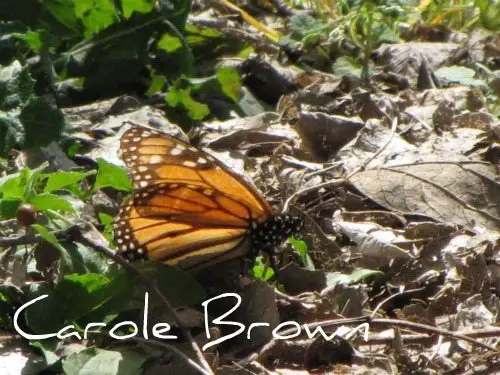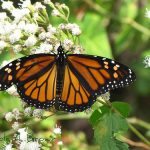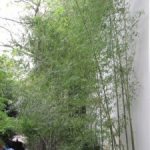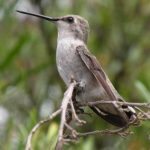I was thrilled to see my first Monarch Butterfly of the season this year while in Austin, TX to visit the Lady Bird Johnson Wildflower Center. And it reminded me that I want to create a more welcoming habitat for Monarchs in my Pennsylvania wildlife garden this year.
Monarch butterflies from the east coast spend the winter in Mexico as adults and then journey north and lay their eggs in the spring, with each generation moving further and further north. The last generation in the fall will not lay eggs, but fly all the way back to Mexico to spend the winter again.
It’s really easy to welcome Monarch butterflies into your wildlife habitat garden by adding more milkweed for them, because female Monarchs will only lay their eggs on milkweed plants. It’s the only plant that the caterpillars can eat.
Here in the northeast we have several good choices of milkweed (Asclepias family) plants that will make your wildlife garden a welcoming oasis for these beautiful butterflies.
I’d only recommend the Common Milkweed (Asclepias syriaca) if you have a large garden. This is a perfect plant in a wildflower meadow if you have space to let it run, but it can be kind of aggressive in smaller gardens.
A much better choice for smaller wildlife gardens would be the Swamp Milkweed (Asclepias incarnata) which has very pretty pink to purple flowers, and despite it’s name, does not require wet conditions to thrive in your garden. It does quite well in my garden in clay soil with no irrigation.
Another great choice to attract Monarch butterflies to your wildlife habitat garden is Butterfly Weed (Asclepias tubersosa) with it’s brilliant orange flowers. Be careful where you plant this milkweed, though because it doesn’t do as well in heavy clay soil.
Many of my wildlife gardener friends in Cape May, NJ have been planting seeds of the Tropical Milkweed (Asclepias curassavica), which can only be grown as an annual here in the northeast, but is quite easy to grow from seed.
And I can attest from spending time with my friends in their wildlife gardens that the Monarch butterflies really love to lay their eggs on this plant. Plant extra because I’ve seen caterpillars eat the stem right down to the ground. Your reward of course is to know that you’ve given the gift of habitat to these stunning butterflies in your wildlife habitat garden.
More From Ecosystem Gardening:
Submit your review | |








